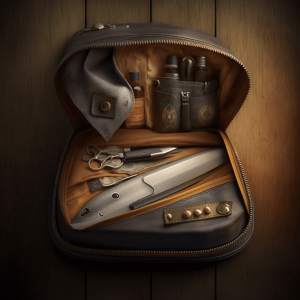Whether you are planning to go on a wilderness hike or simply enjoy the outdoors, it’s important that you have some survival skills and equipment such as an assisted open pocket knife to ensure your safety. For survival, you need water, food and shelter. These tips will help you make it through any outdoor adventure.

Water
Water is essential for survival outdoors. It’s also one of the most dangerous, because if you don’t have access to it, you can easily become ill or die.
It helps to prevent dehydration. That’s why it’s important to always have at least 1.5 liters (1.3 cups) of water with you in the wilderness. It’s approximately 60 percent of an adult’s total body weight.
Although water might not be something you consider a survival skill for you, it is essential that you know how to find it and how to use it in the wild. Water can come from many sources, including rivers, lakes and seas.
It is important to know how to use water outdoors and how to treat it if it is not safe to drink. When it comes to water survival outdoors, there are three main options: boiling, filtering and chemical treatment.
While boiling water is a great method to treat contaminated waters, it’s not always practical. For example, there are a number of water purification tablets you can carry in your backpack, as well as handheld ultraviolet light units and portable microfilters that you can use on the go.
Food
If you plan on survival outdoors, make sure you have plenty to eat in an emergency. This can help you stay energized and prevent dehydration, which can be fatal in survival situations. To have the funds in case of emergencies, you might want to look into playing some fun and interactive sports betting games via k-oddsportal.com.
When choosing survival foods, one of the most important things to consider is whether they contain calories and carbohydrates as well as protein and vitamins. These four nutrients are essential to sustain life in the wild and keep you healthy.
You don’t have to rely on wild animals for your food. You can also forage for edible plants. For example, berries are abundant in vitamin C and can be found all year. They can be eaten raw or cooked.
Other edible plants include clovers, ferns, leaves and flowers. The leaves and flowers can be eaten raw or cooked into tea. Sun-dried blossoms can be pounded with a stone into flour, which is a traditional Native American food.
You can use a survival knife or a sharpened stick to break open and eat the berries, but be careful not to ingest the thorny seeds. They can cause a burning sensation.
The best way to cook in a survival situation is to heat the food by boiling it. Kay suggests that you make a vessel from birch bark. Once you have your food and water, heat it up on the coals.
Shelter
Shelter is a critical factor when surviving outdoors, because it protects your body from exposure to the elements such as wind and rain, cold and snow. Without shelter, hypothermia can quickly lead to death.
It is easy to build survival shelters quickly. They are simple to set up and can easily be made with what you have.
The lean to is one of the most basic shelters. This shelter is ideal if you’re stuck in an area with no trees. This shelter can be made in ten minutes with a tarp and rope.
The A-frame shelter is another quick and efficient option. This shelter is easy to make and has excellent heat retention. You can also improve its warmth and comfort with more additions over time. This shelter is more versatile than the lean to, and offers more room for improvement. It is also a lot less expensive to build than a lean-to.
To prevent water from running down your walls and dripping onto you, make sure you have a smooth surface when building your A-frame shelter. To insulate your shelter you will need to use a thick layer if dry grass or leaves.
A good insulator is cattail leaves and stems, as they have air trapped in their cells. You can also insulate your shelter by putting milkweed seeds or other vegetation into your clothing and bedding to trap warm air.
If you don’t have access to thatching material, it is possible to cover your shelter using pine boughs, grass stems or moss. This will protect your shelter from rain and wind damage.
Safety
It is important to take the time to learn about outdoor safety. This includes knowing how to find the best outdoor space that suits your needs, as well as using common sense when navigating unfamiliar terrain.
A good starting point is a simple question: What can we do to improve our safety? It will help you feel more confident out there. For example, using a GPS unit for your smart phone is a good idea because you will have it on hand to help guide you back home or to your next destination.
It’s a great way to remember the most important safety steps is to keep a safety book or chart. It will make it easier to remember them when you most need them. This will help you to refer to them in the future when you need them.

